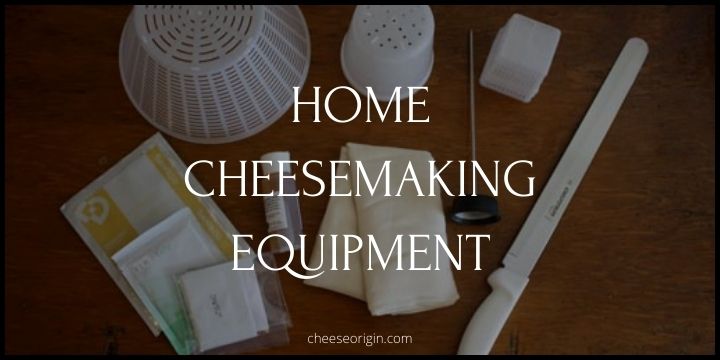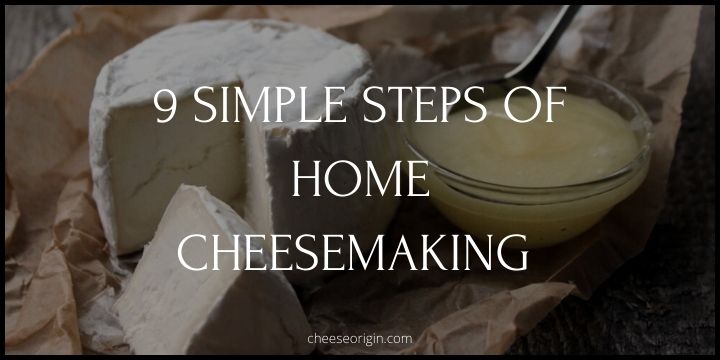Top 19 Home Cheesemaking Equipment & Tools (2023)

If you are interested in home cheesemaking then I have narrowed down to the top 24 most essential equipment.
I believe that most of the items listed on this page can already be found in your kitchen.
If not, you can easily purchase from Amazon, cheesemaking supply house or your local department store.
Let’s get started…
Also read: What Knives and Tools to Use When Serving Cheeses?
1. Atomizer
An atomizer is sort of like a electrostatic sprayer (aka mist gun). It is recommended to have one (though not a ‘must-have’) so you can deliver a fine mist of mold solution to the surface of mold-ripened cheese.
This will help minimize and stabilize moisture as too much moisture can result in the growth of undesirable mold.
2. Bowl (13-quart)
Many people, when starting out, use a pot of milk in a sink full of hot water. This is not recommended because:
- It is extremely inconvenient
- It may damage your sink
- Requires you to use more hot water than necessary.
On the other hand, you can use a 13-quart bowl.
Simply place the pot of milk in the 13-quart bowl and add hot water to the bowl.
Now you have a convenient hot-water-jacketed cheese vat on your table.
3. Butter Muslin
A tighter weaver than cheesecloth and Butter Muslin is essential for draining soft cheeses. Soft cheese must always be drained in better muslin. This can also be used interchangeably in hard-cheese making.
4. Cheesecloth
This is used to drain curds and line molds for hard cheeses. Nevertheless, most cheesecloth you find in the department store is not woven tightly enough for cheesemaking hence you may lose your precious curds through those large holes.
5. Cheese Boards
Cheese boards are not just for serving, they can also be used as a draining platform and for making mold sandwich for cheeses such as Brie, Camembert, and Coulommisers.
You can go for woods such as:
- Bamboo
- Spruce
- Clear pine
- Larch
- Beech
- Ash
- Birch
But absolutely avoid:
- Walnut
- Redwood
- Teak
- Mahogany
6. Cheese Mats
Cheese mats are quite similar to Sushi mats and the purpose are for draining mold-ripened cheeses such Brie, Camembert, and Coulommiers.
During aging, you can also place a cheese mat under a hard cheese for better air circulation.
We advise having at least a pair of cheese mats.
7. Cheese Press
All hard cheeses need to be pressed and the good news is you can build one yourself. All you need is two boards and a rock and you are good to go.
If you plan to buy one then choose a model that is big enough, convenient to assemble and easy to clean. (see below)
If you are more advance, then choose a press that provide a way to measure the amount of pressured applied.
Click here to check out the Advanced Cheese Press with measurement
8. Cheese Trier
Cheese trier is extremely useful when you want to have a taste of your aging cheese to see if it is ready to eat.
Simply cutting your aging cheese to have bite will literally stop its aging process so investing in a cheese trier would be worth the buck.
Cheese trier is not available at most department stores and on Amazon (at the time of writing this post in February 2021). It is only available in cheesemaking supply house. Click here to get one.
9. Cheese Paper
Cheese paper allows your cheese to breathe and will reduce the probability of unwanted molds to grow when left aside for several days. Note: Never wrap your cheese in plastic as you might suffocate your cheese and invite all sorts of unwanted microbes!
Cheese paper creates an ideal environment for your cheese to thrive, therefore, having cheese wrap at your disposal is a no-brainer.
Tip:
You can reuse cheese wrap for the same type of cheese until you notice some butterfat stains.
10. Colander
Colander is used to drain whey from the curds. If you have a colander that have plenty of holes on the bottom then you do not need to get one specifically for cheesemaking.
11. Curd Knife
Curd knife has a flat blades and rounded end so you can reach the bottom of the pot with ease without submerging the handle.
The ideal curd knife length should be at least 12-inches long. Do not get anything less than that.
If you want the real thing, check out this 14-inches curd knife by Cheese Making Supply Co.
12. Dairy Thermometer
Gauging the correct temperature of the milk is an essential part of making great cheese.
Your dairy thermometer needs to range from 0 to 220°F (-18 to 104°C) for optimal reading.
Tip:
To test if your thermometer is working properly simply place it in boiling water. The result should show 212°F or 100°C. If not, do make the necessary adjustments before using.
I recommend a dairy thermometer with a bracket to hold them on the side of the pot. It is surprising to see that some dairy thermometers do not have this feature.
13. Hygrometer
Hygrometer is used to monitor humidity – a critical aspect for aging cheese.
14. Ladle or Skimmer
Perforated ladle (aka a skimmer or curd scoop) is a key tool to transfer the curds into colanders and stirring.
You can also pour rennet through the ladle to evenly distribute it over the surface of the milk.
Also read: What is Rennet in Cheesemaking?
As with all utensils, we strongly advice going for food-grade stainless steel.
If you cook frequently, chances are, you already own a ladle.
15. Measuring Cup (For Liquid)
It is always better to get a glass measuring cup as compared to plastic because you will be using it to measure rennet and you need to keep it absolutely clean.
16. Mini Measuring Spoon
Measuring spoon helps you measure starter cultures and mold powders. Go for stainless steel and get the mini ones starting with at least 1/32 teaspoon.
Investing in mini spoons will help you make the most accurate micro measurements for the most precise results.
17. Molds
Molds are used in the final draining period and comes in all kinds of shapes and sizes.
This is the tool that determines the final shape of your cheese.
18. Notebook
Notebook is not just essential for cheesemaking, it is a must-have for tasting and pairing too.
Anyone who is interested in experiencing cheese more immensely should get a notebook!
Sometimes your ‘mistakes’ in cheesemaking may turn out to be extremely delicious and you want to refer back to what you did.
Certain pairings that you thought would never work turned out to be the perfect pairings for you. You want to remember them all!
If you don’t have a quality notebook at home then I recommend that you get a sturdy one. It’s worth the investment!
19. Pots
Glass, stainless steel and enamel pots are all excellent materials. However, try to get one with a thick bottom as it will hold heat better.
Articles to read:





